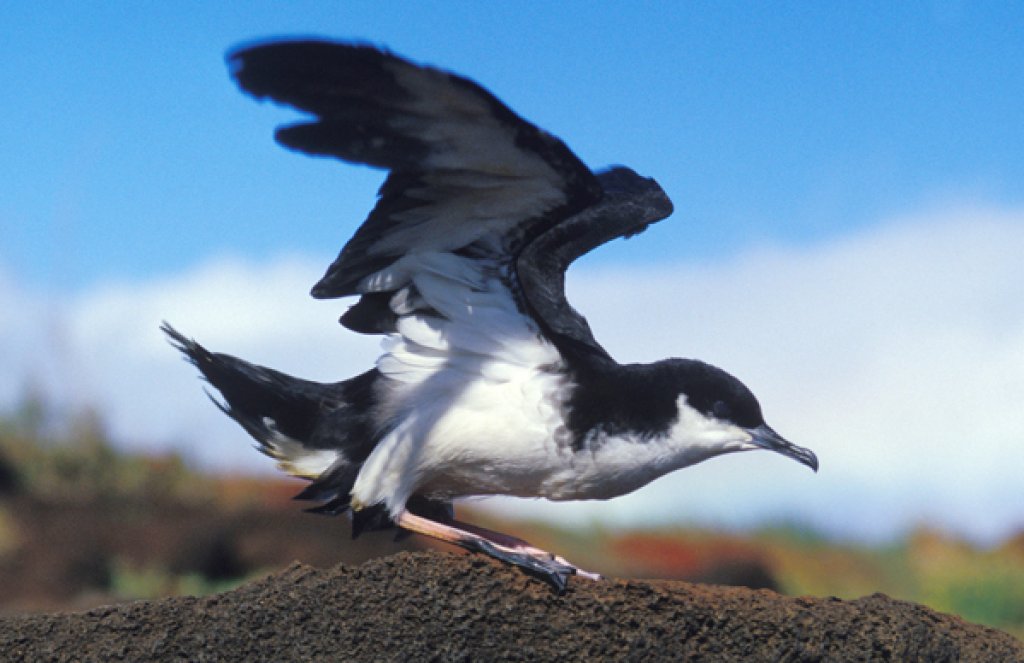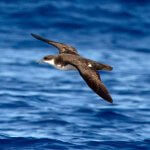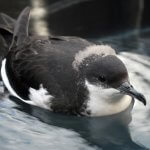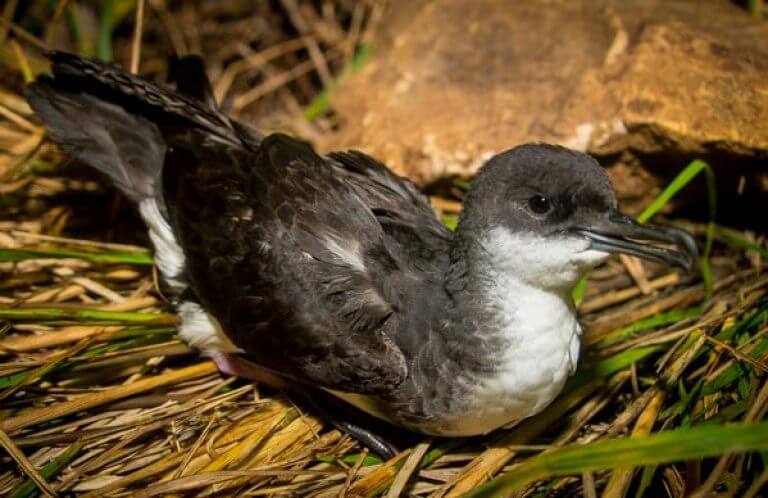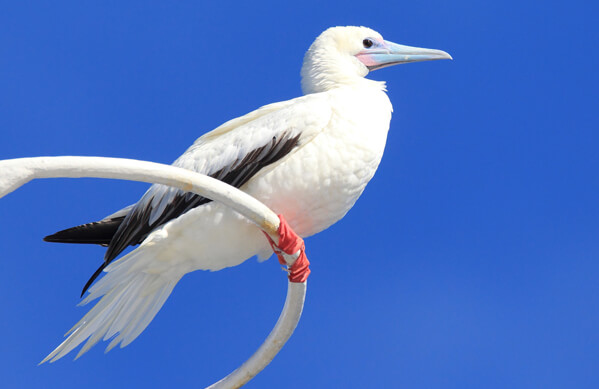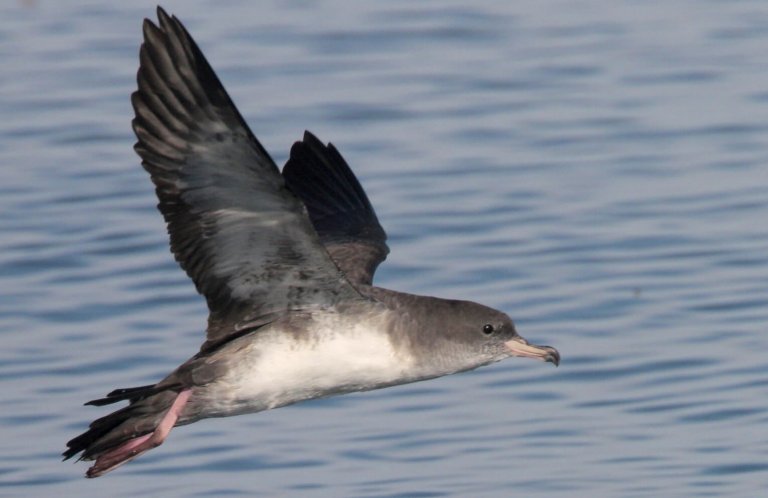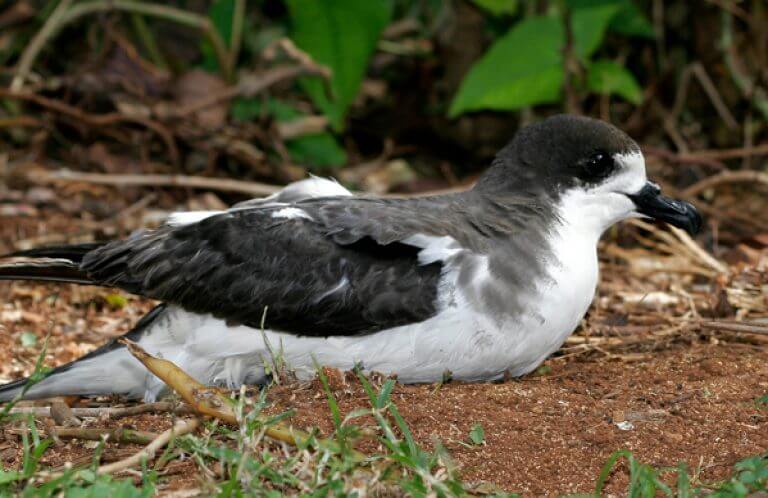About the Newell's Shearwater (ʻAʻo)
The low, moaning call of the Newell's Shearwater gives this small black-and-white seabird its onomatopoeic Hawaiian name ʻAʻo. First described by ornithologist Henry Henshaw in 1900, the elusive bird was declared extinct in less than ten years, then was rediscovered at sea in 1947. This seabird's taxonomic history is equally complicated: It was not declared a full species until 2004, separating it from the closely related Townsend's Shearwater, which ranges the seas off the coast of western Mexico.
Tuna Birds
Newell's Shearwaters are sometimes known as "tuna birds," since they often follow schools of those big, predatory fishes in mixed seabird flocks that may include the Red-footed Booby and White-tailed Tropicbird. The shearwaters seem to rely on tuna schools to drive their squid and fish prey close to the ocean's surface for easy capture.
Songs and Sounds
The Newell's Shearwater is noisiest on its nesting grounds, where its loud calls are compared to the sound of donkeys braying.
Breeding and Feeding
Newell's Shearwaters, like related seabirds such as Pink-footed Shearwaters, spend much of their lives at sea, returning to land only during their breeding season, which begins each April. Amazingly, these highly aerial birds nest in burrows, which they dig with their beaks and feet in thick underbrush, often at the base of a tree, on steep, inaccessible mountain slopes.
The female shearwater lays a single egg in a chamber at the end of the two- to three-foot-long nest burrow, and both parents incubate the egg and feed the fluffy, gray hatchling by regurgitation. Parent birds forage hundreds of miles offshore and return to the colony at night to feed their chick, which will fledge by late October or November. Fledglings stay out at sea for their first several years, only returning to land for their first breeding season when they're between six and seven years old.
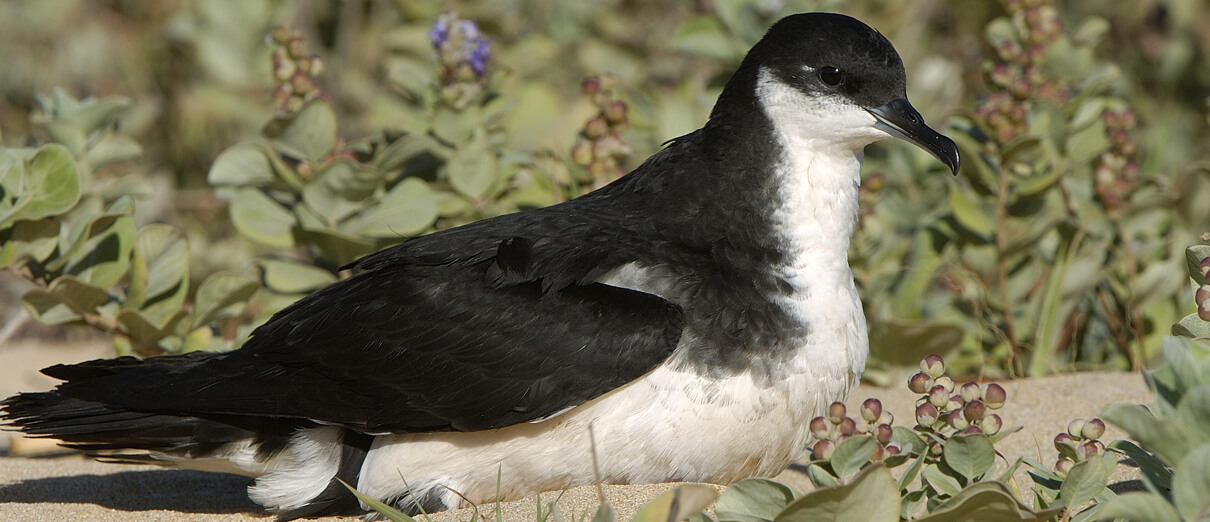
Newell's Shearwaters forage far out over the open ocean, capturing and eating squid and small fish after diving into the water from the air, then swimming underwater on partly opened wings to depths of over 150 feet.
Region and Range
Found only in Hawaiʻi, most Newell's Shearwaters nest on the steep forested slopes and cliffs of Kauaʻi. Small colonies also exist on Molokaʻi, Maui, and the Big Island (Hawaiʻi).
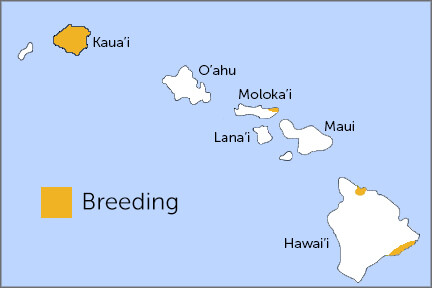
Conservation of the Newell's Shearwater (ʻAʻo)
Newell's Shearwater numbers continue to decline precipitously. Predation at nest burrows by non-native cats, rats, pigs, and mongooses is one of the most significant threats to this species, along with habitat degradation by invasive plants and animals, including pigs and goats.
Collisions with powerlines kill many shearwaters traveling to and from their nest burrows. Young birds heading to sea for the first time are often attracted by the night-time artificial lighting of playing fields, hotels, resorts, and streets. They become disoriented and circle the lights until they become exhausted and fall to the ground, where they may be injured or killed by cars, cats, and dogs.
Save Our Shearwaters (SOS), a licensed rehabilitation organization on Kauaʻi, has been addressing this threat since 1979, urging citizens to collect downed seabirds — the majority of which are state and federally listed endangered species — and bring them to their centers. Over 90 percent of these birds, including several thousand young Newell's Shearwaters, have been rehabilitated and returned to the wild, although their survivorship is in most cases unknown. ABC has pursued litigation under the Endangered Species Act to force entities responsible for powerline mortality and light attraction on Kauaʻi to take action to reduce their impact.
In 2014, ABC collaborated with partners including the U.S. Fish and Wildlife Service, Pacific Rim Conservation, and the Kauaʻi Endangered Seabird Recovery Project to build the first-ever predator-proof fence on Kaua'i, at Kilauea Point National Wildlife Refuge. Starting the following year, conservationists began to move Endangered Hawaiian Petrels (U‘au) from unprotected colonies to this new site, known as Nihoku, where they hand-rear the chicks until they fledge. The effort was expanded to include Newell's Shearwater chicks starting in 2016. Chicks typically return to the colony where they were raised when they mate and lay eggs of their own, but first they spend several years out at sea to mature.

Help support ABC's conservation mission!
Over 100 Newell's Shearwater chicks have been translocated to Nihoku since 2016. The concurrent effort to re-establish the Hawaiian Petrel at Nihoku has already seen success, with five translocated chicks returning to the site in 2020 and three breeding pairs with eggs in 2021 and 2022.
In addition to the translocated birds, other seabirds have also been seen inside the fence, apparently prospecting for nesting sites: Bulwer's Petrels, known to breed in the Northwestern Hawaiian Islands and nearby Lehua Islet, and Kermadec Petrels, known to breed only in the Southern Hemisphere. "A true community of nesting seabirds is forming here," observes Sea McKeon, ABC's Marine Program Director. "Nihoku appears on its way to being a diverse and thriving seabird colony."
Conservationists continued to translocate Newell's Shearwater chicks to the shelter of Nihoku through 2020, but there hadn't been a confirmed return to a nesting burrow — until June 2022, when a male translocated in 2018 returned, raising hopes that others will eventually join it to start a new colony — a needed lifeline for this species.
Get Involved
Policies enacted by the U.S. Congress and federal agencies have a huge impact on Hawai'i's birds. You can help shape these rules for the better by telling lawmakers to prioritize birds, bird habitat, and bird-friendly measures. To get started, visit ABC's Action Center.
Our Hawaiian partners frequently need help with habitat restoration and other projects benefiting birds. If you live in or will be visiting Hawai'i and would like to volunteer, check the following Facebook accounts for opportunities: Kaua'i Forest Bird Recovery Project, Maui Forest Bird Recovery Project, and Mauna Kea Forest Restoration Project.
American Bird Conservancy and local partners are restoring forests, protecting critical habitat, and much more to save native Hawaiian birds. This is a monumental undertaking, requiring the support of many, and you can help by making a gift today.





































